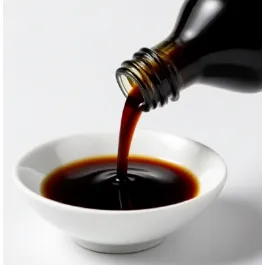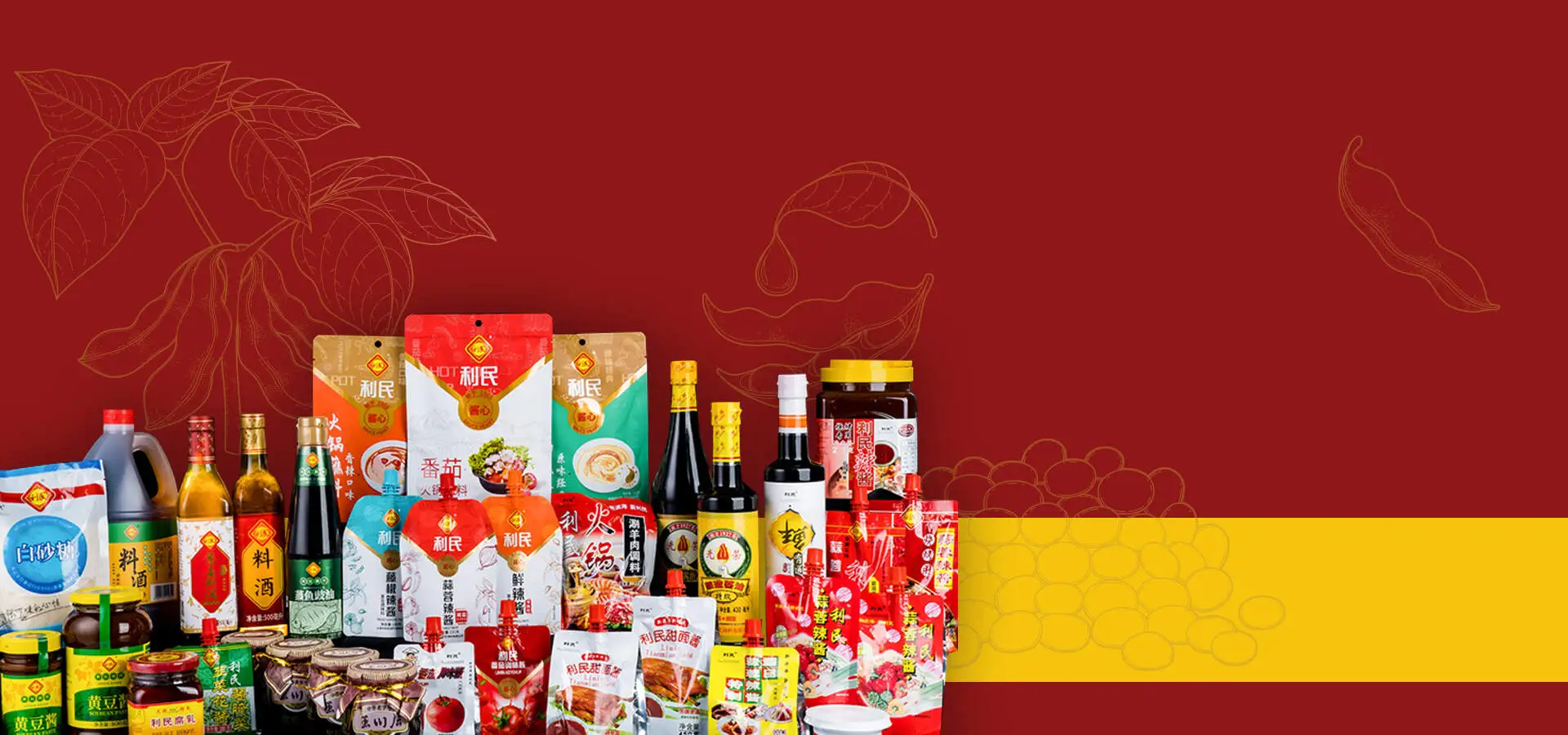关键要点
该探索研究了专业大豆酱的深刻烹饪影响, 超越对这种无处不在的调味品的通用理解. 我们将研究 深棕色酱油 它的着色和味道浓厚的特性, 特别是在慢煮的菜肴中, 和细微的, 专用的平衡概况 饺子酱油. 中心论点认为调味料的质量, 来自信誉良好的 酱油供应商 like Limin, 不是一个次要的细节,而是决定烹饪创作的真实性和卓越性. 我们将研究发酵科学, 风味平衡的艺术, 并提供实用, 改变游戏的应用程序将提升您的烹饪, 无论您是家庭爱好者还是专业厨师.
目录
- 邀请正宗酱油的邀请
- 比较眼镜: 了解您的酱油阿森纳
- 1. 用深棕色酱油掌握红色武器的艺术
- 2. 完美的伴奏: 用专门的饺子酱油提升点心
- 解构完美的饺子
- 3. 创建视觉上令人惊叹且美味的釉料
- 4. 在素食和纯素食烹饪中建造鲜味
- 5. 制作正宗的腌泡汁,嫩化和注入
- 6. 富人的秘密, 美味的面条汤和汤
- 7. 用东方扭曲重塑西方经典
- 丝束差异: 为什么您的酱油供应商很重要
- 常见问题
- 参考
邀请正宗酱油的邀请
开始讨论有关酱油的讨论是打开一扇门,延伸了两千年的历史. 这是调味品, 是的, 但是要标记这样的标签感觉就像是一种轻描淡写. 它更类似于基础液体, 建立整个美食传统的烹饪基石. 在亚洲的许多厨房中, 特别是在中国, 一瓶酱油不仅是一种成分; 这是厨房非常灵魂的象征. 然而, 对于西方的许多人, 中东, 或欧洲, 它的全部潜力仍然是一个美丽的谜. 单人, 在许多储藏室中发现的全能瓶咸棕色液体只是一个巨大的注意, 复杂的口味交响曲. 我的目的是邀请您深入了解此交响曲, 探索两个特定的功能, 尚未变革, 变化: 富人, 粘性 深棕色酱油 而且完美平衡 饺子酱油. 我们不仅要考虑它们是什么, 但是他们是什么 做 - 它们的功能不是仅仅是添加的功能,而是在食物转化中作为活性剂.
我们的旅程需要转变的观点. 我们必须摆脱简单的思考酱油 “盐。” 它的盐盐能力可能是其最基本的功能. 真正的艺术性在于其其他属性: 它赋予颜色的能力, 赋予一个深厚的咸味深度称为乌玛(Umami), 嫩化蛋白质, 平衡其他口味, 并创建光泽, 在成品上开胃光泽. 这些品质在所有类型的酱油中都不均匀. 他们被种植, 精制, 并通过成分的变化而专门, 酿造时间, 和酿造后的过程. 高质量 酱油供应商 不只是卖产品; 他们提供了精心策划的烹饪工具的调色板. 了解如何使用这些工具是释放烹饪中新的真实性和精致水平的关键. 这不是关于奴隶制的遵循食谱,而是要培养对风味的直觉理解, 厨师之间的对话, 成分, 和调味料本身. 我们将研究看似简单的液体, 实际上, 氨基酸的复杂悬浮液, 糖类, 和芳香化合物, 每个在菜的最终口味和外观中都起着关键作用. 让我们首先澄清乐团中的主要乐器.

比较眼镜: 了解您的酱油阿森纳
在我们掌握这些调味料的应用之前, 我们必须首先开发一个清晰的, 对差异的功能理解. 这是混乱的普遍点, 即使是经验丰富的厨师. 看到标有标签的瓶子 “光,” “黑暗的,” “蘑菇味,” 或者 “甜的” 可能令人困惑. 出于我们的目的, 让我们专注于构成许多中国储藏室骨干的基本三重奏, 包括我们探索主题的专业酱. 从它们的主要功能来思考这些调味料 - 他们 TELOS, 如果您愿意 - 可以立即清晰. 下表设计的不是详尽的清单,而是作为指导您在厨房选择的概念图. 它以每个调味酱的核心目的构架, 它的感官特征, 及其理想的烹饪角色. 当我们探索更复杂的应用程序时,该框架将作为我们的基础.
1. 用深棕色酱油掌握红色武器的艺术
中国烹饪曲目中很少有菜肴,例如标志性或令人愉悦的菜肴 “hong shao rou,” 或红胸猪肚. 名称本身, “hong shao,” 转换为 “红煮,” 直接提及美丽的, 深红色的棕褐色桃花心木光泽是菜的特征. 这种颜色, 这种富人的视觉诺言, 复杂的味道, 几乎完全是高质量的工作 深棕色酱油. 用通用或轻酱酱尝试这样的菜将完全错过这一点; 你会达到咸味, 但是您将无法实现这种标志性颜色和微妙的, 定义它的焦糖甜味. 使用 深棕色酱油 这不仅是一种调味料行为; 这是一种转型行为, 将谦虚的食材变成真正宏伟的东西.
Maillard反应和焦糖的科学
真正欣赏锅中正在发生的事情, 我们必须通过科学镜头来研究这个过程. 红胸菜的魔力在于两个关键的化学反应: Maillard的反应和焦糖化. Maillard反应, 正如食品科学家哈罗德·麦吉(Harold McGee)在开创性的工作中所解释的那样 关于食物和烹饪, 是氨基酸与减少食物加热时发生的一系列复杂的反应 (麦吉, 2004). 它负责肉的褐变, 面包的外壳, 和烤咖啡的味道. 当你第一次烤五花肉, 您正在发起这一反应, 创造咸味的基础, 复杂的风味分子. 然而, 缓慢的炖过程是 深棕色酱油 进入中心舞台. 这种酱油不仅咸; 它包含糖, 通常来自糖蜜的添加. 随着液体在较低温度的长时间沸腾, 这些糖经过焦糖化, 涉及糖热分解的Maillard反应的单独过程. 这种焦糖化有助于深, 深色和苦乐参半的复杂性,平衡猪肉脂肪的丰富度. 酱汁减少, 它的粘度增加, 它紧贴肉, 创造不可抗拒的釉. 总理 酱油供应商 了解这种化学; 他们的 深棕色酱油 用氨基酸和糖的最佳平衡配制,以促进这些反应.
选择右切肉以获得最佳风味
炖的成功取决于容器与在炖液体上一样. 像洪肖这样的菜, 理想的切割是皮肤上的猪肚, 拥有独特的, 甚至脂肪和瘦肉层. 为什么这么重要? 脂肪不是这里的敌人; 这是一个关键组成部分. 随着它在长期烹饪过程中慢慢渲染, 它丰富了酱汁, 增加甘美的口感并在整个菜肴中携带脂溶性风味. 皮肤中的胶原蛋白分解成明胶, 这进一步使酱汁变稠并使其变得粘稠, 令人咂嘴的品质. 瘦肉, 同时, 吸收炖液的味道. 肉的结构就像海绵一样, 和缓慢的, 温和的烹饪过程可以使复杂的分子从 深棕色酱油, 姜, 八角, 和其他芳香剂深入渗透到肌肉纤维中. 选择太瘦的切口会导致干燥, 质地粘稠,酱汁缺乏浓郁度. 融化的脂肪之间的相互作用, 胶状皮肤, 充满风味的肉证明了传统烹饪的智慧, 成分与技术的完美结合.
经典红烧五花肉的分步指南
让我们将其变为现实. 想象一个 1 公斤 一块带皮五花肉, 切成1.5英寸的方块. 第一步,将猪肉放入沸水中焯几分钟,以清洗并去除杂质. 然后, 在炒锅或厚底锅中, 你会添加少量的油和一汤匙或两汤匙糖, 煮至融化并变成浅琥珀色. 最初的焦糖化形成了第一层颜色. 然后加入猪肉块并在各面煎炸, 参与美拉德反应. 在此刻, 引入芳烃: 厚姜片, 几个完整的八角豆荚, 一根肉桂棒, 如果你喜欢一点辣味,还可以加一些干辣椒. 现在是节目的明星. 您将添加大约 1/4 一杯绍兴酒来给锅脱釉, 刮擦任何美味的褐色碎片. 然后, 约 1/3 高质量的杯子 深棕色酱油 和 2 汤汤倒入汤匙. 深色酱油是颜色和深层味道; 淡酱油主要用于调味. 添加了足够的热水以覆盖猪肉, 并将混合物煮沸, 然后降低到最温和的慢火煮. 锅被覆盖, 猪肉至少要炖 90 分钟, 或直到融化嫩嫩. 在决赛中 20-30 分钟, 拆下盖子以使酱汁减少并变厚成光荣, 光泽涂层. 最终产品证明了耐心的变革力量和优越的 深棕色酱油.
2. 完美的伴奏: 用专门的饺子酱油提升点心
如果红色爆发显示慢速, 深层的魔法 深棕色酱油, 浸入新鲜蒸饺子的行为揭示了立即的, 明亮的, 和专业酱的平衡魅力. 饺子, 以多种形式 - jiaozi, 馄饨, shumai-这是一个烹饪喜悦的宇宙. 精致的包装纸, 美味的填充, 热汁; 这是一个完美的咬人. 但是,可以通过伴奏来超越一口. 将精心制作的饺子浸入一维, 过于咸酱油是错失的机会. 就像将优质牛排和便宜配对, 苛刻的葡萄酒. 蘸酱的目的不是让饺子淹没,而是要补充, 削减它的丰富性, 强调其微妙的口味, 并增加另一层复杂性. 这是良好成型的确切作用 饺子酱油.
超越咸: 真正的饺子的复杂风味曲线
有什么区别 饺子酱油 来自其全能表弟? 答案是平衡的. 厨师或经验丰富的家庭厨师可能会混合自己的蘸酱, 将浅酱油与黑色醋混合, 香油, 切碎的大蒜, 也许是一些辣椒油或姜碎的生姜. 目的是建立和谐的咸味 (xian 咸), 酸的 (suan酸), 和咸 (xiang 香). 质量 饺子酱油, 来自周到的 酱油供应商, 这项工作适合您吗. 它使用高级淡酱油作为基础, 确保清洁, 富含蛋白味的咸味. 对此, 它添加了特定类型的醋, 通常是温和的黑色醋, 它提供了一种温和的酸度,可以清洁口感并平衡饺子填充中的脂肪. 它通常注入大蒜和生姜的本质, 不苛刻, 原始块, 但是作为微妙的芳香背景注释. 有些版本可能会加入一点糖来使边缘变圆,或者加入一点芝麻油来散发坚果香味. 结果是完美校准的酱汁. 咸到足以调味, 酸性足以提神, 并且香气足以诱惑, 一切都不会掩盖饺子本身的细腻味道.
醋的作用, 蒜, 和姜
让我们考虑一下这三位一体的风味中每个成分的功能. 醋的作用尤为重要. 在中国美食中, 醋不仅仅是酸味剂; 它是创造平衡的工具, 尤其是针对油腻食物. 醋中的醋酸确实可以分解脂肪, 防止味蕾变得不堪重负,让您享受更多食物. 想象一下挤柠檬如何让炸鱼升起; 中国黑醋对于多汁的食物具有类似的功能, 煎锅贴. 大蒜和生姜, 中国风味基础的主食, 不仅贡献了其特有的辛辣味,还贡献了芳香的复杂性. 正如书中所论证的 品尝 & 技术: 提升家庭烹饪水平的食谱, 这些芳香风味的分层提供了单一成分无法达到的深度 (普拉特 & 头, 2016). 当注入 饺子酱油, 它们锋利的边缘变得柔和, 无缝融入液体中,提供温暖, 咸味骨干. 您可以将这些元素完美地平衡在一瓶中,非常方便 酱油供应商 无论如何强调都不为过, 特别是对于那些寻求正宗风味而又没有大量专业原料的人.
为什么要有专门的 饺子酱油 从品质 酱油供应商 事情
有人可能会问, “为什么不只是自己混合?” 当然, 你可以, 许多人这样做. 然而, 预制的价值 饺子酱油 来自像Limin这样的优质生产商的一致性和基础成分的质量. 生产商可以使用特定的醋和输液技术,以确保每次都相同的风味。. 用作特定等级的浅酱油, 选择其干净的味道和最佳盐度. 在伦敦的餐厅或迪拜的餐饮服务商, 这种一致性是最重要的. 为家庭厨师, 这是没有猜测的真实品味体验的保证. 它认识到蘸酱不是事后的想法,而是饺子体验不可或缺的一部分. 它通过提供一个有价值的合作伙伴来尊重饺子制造商的工艺. 它表达了一种烹饪哲学,即盘子上的每一个元素, 即使是最小的一盘酱汁, 经过深思熟虑.
解构完美的饺子
进一步阐明平衡蘸酱背后的哲学, 让我们分解一下每个关键成分的感官贡献. 了解这种平衡使您能够欣赏高质量的预制作品 饺子酱油 甚至可以自信地定制您自己的蘸酱. 目标是整体大于部分之和的协同效应. 合适的酱汁同时吸引多种感官和味觉感受器, 创造更加动态和令人满意的体验.
3. 创建视觉上令人惊叹且美味的釉料
食物的视觉吸引力是它对我们做出的第一个承诺. 我们先用眼睛吃. 一道有钱的菜, 光泽的光泽本质上比苍白和哑光更开胃. 这是另一个领域 深棕色酱油 展示其独特的能力, 作为为烘烤或烧烤食品创造精美釉料的关键成分. 釉料的作用不仅仅是增加颜色; 它是一层浓缩的味道,在加热下会焦糖化, 形成美味的外壳,锁住水分. 具体属性 深棕色酱油 使其非常适合这项任务, 任何有眼光的厨师或食品生产商都明白这一事实. 当寻找一个 酱油供应商 用于专业或雄心勃勃的家庭烹饪, 黑酱油的上光潜力是质量的关键指标.
黑酱油的粘度和糖度
为什么是 深棕色酱油 在釉料中如此有效? 原因是双重的: 它的粘度和糖含量. 与它更薄的不同, 更咸的对应物, 黑酱油具有糖浆般的稠度. 它紧贴食物的表面而不是逃跑. 这意味着,当您将其刷到一块鸡上, 鲑鱼片, 或肋骨架, 它保持原样, 形成均匀的涂层. 当食物做饭, 这种涂层减少并变厚. 第二个, 同样重要, 因素是它固有的甜味. 如前所述, 深棕色酱油 含有添加的糖, 像糖蜜, 这对于其功能至关重要. 当受到烤箱或烤架干热时, 这些糖迅速焦糖, 创造美丽的黑暗, 漆面和复杂, 略甜和烟熏味. 只用淡酱油制成的釉太薄,无法正确粘附,减少时太咸了, 缺少深处所需的糖, 丰富的焦糖化.
烤肉和蔬菜的玻璃技术
上釉技术很简单,但需要适当的时机. 一个常见的错误是在烹饪过程中过早涂釉. 因为里面含有糖分 深棕色酱油, 如果长时间暴露在高温下,釉料很容易燃烧. 理想的方法是烹饪食物——无论是鸡翅, 猪里脊肉, 甚至是胡萝卜或抱子甘蓝等坚硬的蔬菜——大部分都是先吃. 然后, 在最后 10-15 烹饪分钟, 你开始刷釉. 涂上薄薄的一层, 煮几分钟使其凝固并焦糖化, 然后再涂一层. 这个分层过程建立了深厚的, 颜色均匀、厚实, 美味的外皮,没有烧焦的风险, 苦味. 为了更浓郁的味道, 您可以预先将食物腌制在含有釉料成分的混合物中, 然后使用保留的, 最后刷新釉. 一个可靠的 酱油供应商 提供给您一致结果的产品, 确保您的釉料每次都具有甜味和咸味的适当平衡.
蜜汁酱三文鱼食谱
我们考虑一个实际的, 优雅的应用程序: 蜂蜜酱油三文鱼. 这道菜看起来和尝起来都像是来自高端餐厅,但用正确的原料制作起来却非常简单. 两片三文鱼片, 你会把釉料搅拌在一起 2 汤匙 深棕色酱油, 2 汤匙蜂蜜, 1 汤匙米醋, 1 切碎的蒜瓣, 和 1 茶匙磨碎的新鲜生姜. 黑酱油提供了颜色和美味的深度, 蜂蜜提供甜味并有助于焦糖化, 醋增加了酸度以减少丰富度, 大蒜和生姜提供了芳香的粉底. 您将在200°C烘烤鲑鱼 (400°f) 大约 10 分钟, 直到几乎煮熟. 然后, 您会在鱼片上勺或刷釉,然后将它们返回到烤箱中 3-5 分钟, 也许甚至在肉鸡下完成 30-60 几秒钟才能获得完美的起泡, 焦糖地壳. 结果是一条非常美丽而美味的鱼, 证明了精心制作的釉的力量, 由上级成为可能 深棕色酱油.
4. 在素食和纯素食烹饪中建造鲜味
素食和素食烹饪中最深刻的挑战之一是复制深层, 美味的满足感 - 鲜味 - 通常与肉有关. 鲜味, 第五个基本口味, 源自谷氨酸和核苷酸, 肉很丰富, 老年奶酪, 和某些海鲜. 这些成分的缺失有时会使植物性菜肴感到缺少一定 “某物,” 味道的基础深度. 这是发酵大豆产品的战略使用, 特别是高质量的 深棕色酱油, 不仅变得有用,而且真正的变革性. 它是建立那种富人的强大工具, 复杂的, 并深深令人满意的口味,可以使素食烹饪与杂食对应物一样引人注目. 厨师和食品生产商迎合不断发展的植物市场, 与A合作 酱油供应商 提供强大可口的调味酱是战略上的必要性.
酱油作为肉类替代品的味道
源自大豆的液体如何代替肉? 答案在于发酵的魔力. 酿造酱油的过程涉及大豆中蛋白质分解为其组成氨基酸, 最著名的是谷氨酸. 这是使肉类咸味的同一化合物. 正如Shizuo Tsuji在他的经典作品中指出的那样, 日本烹饪: 一种简单的艺术, 我是酱汁 “咸味的浓缩形式… 当烹饪蛋白质丰富的食物时会产生” (Tsuji, 2006). 当您添加时 深棕色酱油 去盘子, 您本质上正在添加有效的, 浓缩源. 它的风味曲线, 带有焦糖和糖蜜的提示, 还模仿当肉变成褐色和烤时开发的复杂音符. 它提供咸味基线和煮熟的, “褐色” 前调, 产生对丰富性和深度的感知,可以有力地唤起基于肉类的菜肴的满足感.
增强蘑菇, 豆腐, 和豆类菜肴
植物性成分已经是鲜味的鲜味来源, 像蘑菇和西红柿, 特别接受添加 深棕色酱油. 简单的蘑菇ragu或炖肉, 当加强一点点黑酱油时, 实现令人难以置信的新维度. 酱汁补充了蘑菇的泥土味, 放大他们固有的品味,并给整盘一个较暗, 颜色更丰富,感觉更丰富. 豆腐, 这经常因平淡无奇而受到批评, 是黑暗大豆腌料的果断风味的完美帆布. 酱汁不仅季节豆腐,而且在煎炸或烘烤时给它一种开胃的棕色. 在扁豆牧羊人中’ 馅饼, 豆辣椒, 或黑豆汉堡, 几勺 深棕色酱油 可以添加一个 “多肉的” 仅靠盐无法实现的复杂性. 它将这道菜从仅仅是蔬菜的集合变成了一个有凝聚力的菜品, 整个味道浓郁. 一个可靠的 酱油供应商 可以提供使这些转变成功所需的深度的酱汁.
的协同作用 深棕色酱油 与其他富含鲜味的成分
素食风味构建的真正艺术来自于多种鲜味来源的分层. 酱油不必单独发挥作用. 它与其他富含鲜味的素食成分形成强大的协同作用. 考虑纯素肉酱. 你可以从炒洋葱开始, 胡萝卜, 和芹菜. 然后你添加蘑菇, 也许是一些再水化的干香菇,因为它们的味道浓郁, 和一些番茄酱. 这些成分中的每一种都带来了自己的谷氨酸形式. 当您添加一个飞溅 深棕色酱油, 它不只是添加自己的鲜味; 它充当催化剂, 似乎可以放大所有其他成分的咸味. 大豆的谷氨酸, 蘑菇, 和西红柿共同创造一种风味,比任何一个单独的人都能产生的风味更为复杂和令人满意. 这个原则 “鲜味的协同作用” 是高级风味开发的基石, 和 深棕色酱油 是在基于植物的环境中实现它的最有效和通用的工具之一.
5. 制作正宗的腌泡汁,嫩化和注入
腌料是一个承诺. 这是一种味道的承诺,超越了表面, 承诺更温柔, 肉质最终产品. 虽然许多成分可以在腌料中使用, 酱油是无数亚洲食谱的基本元素,这是有原因的. 它同时执行两个关键功能: 它给食物注入了深厚的, 咸味, 它有助于使其变嫩. 然而, 并非所有酱油都适合这项任务. 生抽和老抽的选择, 或两者的组合, 取决于想要的结果. 对于需要提供丰富颜色和风味的腌料, 例如韩国烤肉或中国叉烧, 一个 深棕色酱油 是不可或缺的组成部分. 值得信赖的 酱油供应商 成为创造这些标志性菜肴的合作伙伴, 提供承载整个风味特征的基本液体.
酱油对蛋白质的酶促作用
酱油的嫩化作用不仅仅是补充水分的问题. 发酵豆制品含有天然酶, 蛋白酶, 具有分解蛋白质的能力. 虽然不如菠萝中的酶那么具有攻击性 (菠萝蛋白酶) 或木瓜 (木瓜蛋白酶), 酱油中的酶, 结合其高盐含量, 努力轻轻地分解肉中较坚韧的结缔组织. 盐还通过一个称为渗透的过程起作用, 从肉中抽出一些水,同时吸入腌料的美味液体. 这会产生更加多汁的质地,并确保味道渗透到表面之外. 酶嫩化和风味注入的双重作用使得酱油成为如此有效的腌料基料. 正如食品科学界详细介绍的, 腌料的盐浓度和 pH 值在此过程中发挥着重要作用, 影响肌肉纤维如何膨胀和保持水分 (探索性, ND.).
平衡甜蜜, 咸, 和腌料中的芳香成分
出色的腌料是平衡的研究. 它很少只是一张纸条. 经典的亚洲腌料, 例如, 几乎总是会平衡酱油的咸味和鲜味与某种形式的甜味 (糖, 蜂蜜, 味醂), 酸度 (醋, 柑橘), 和芳烃 (蒜, 姜, 葱, 五香粉). 深棕色酱油 不仅提供盐和鲜味,还提供糖蜜般的甜味和深色. 这个必须要平衡. 例如, 烤鸡串的腌料, 你可以结合 深棕色酱油 上色用生抽调味初级咸味. 然后你会添加蜂蜜来增加甜味和釉料, 米醋可提亮酸性, 芝麻油带来坚果香气, 和切碎的大蒜和生姜以增加刺激性, 辣骨干. 每种成分都有其用途, 他们协同工作创造出复杂的最终风味, 和谐, 并深深令人满意. 的作用 酱油供应商 是提供可靠的, 可以在上面绘制这些其他口味的高质量画布.
来自值得信赖的通用腌料配方 酱油供应商
虽然食谱应始终适应正在烹饪的特定成分, 可以创建一个多功能的, 适合鸡肉的通用腌料, 猪肉, 牛肉, 甚至硬豆腐. 这是专业厨房可能使用的基本食谱, 根据需要调整它. 让我们构建一个. 在一个碗里, 结合 1/4 一杯生抽 (用于盐), 2 汤匙 深棕色酱油 (对于颜色和深度), 2 汤匙蜂蜜或红糖 (为了甜味), 1 汤匙米醋 (酸度), 1 汤匙烤芝麻油 (用于香气), 3 蒜末, 和一块 1 英寸的姜末. 这种混合物创造了完美的口味平衡. 使用它, 你会把你选择的蛋白质腌制至少 30 几分钟就能吃到鸡块之类的小东西, 或者过夜以获得更大块的牛肉. 结果将是食物不仅仅是涂有味道, 但却被它彻底浸透, 使用以优质酱油为基础的均衡腌料的直接结果.
6. 富人的秘密, 美味的面条汤和汤
美味的汤面就是碗里的完整世界. 这是一种安慰, 滋补的, 和复杂的膳食, 它的灵魂是肉汤. 一个薄薄的, 平庸的肉汤会毁掉整个体验, 无论面条或配料有多好. 创造出具有深刻深度的肉汤, 色彩丰富, 令人满意的美味角色是一种艺术形式, 以及许多亚洲最著名的汤面, 从日本拉面到台湾牛肉面, 酱油是不可协商的成分. 具体来说, 明智地使用 深棕色酱油 通常是实现吸引人的深色色调和基础的秘诀, 仅用盐无法提供的共鸣风味. 适用于任何专营面汤的餐厅或餐饮服务企业, 与一致的伙伴关系, 高质量 酱油供应商 是他们成功的基础.
使用 深棕色酱油 用于颜色和粉底口味
从头开始制作肉汤时, 你先煮骨头, 肉, 和芳香剂数小时以提取胶原蛋白, 明胶, 和味道. 这创造了丰富的基础, 但它通常颜色苍白并且缺乏某种咸味. 这就是酱油的用武之地. 主要调味会添加生抽, 获得正确的盐度. 但这是 深棕色酱油 这发挥了更深层次的魔力. 在一大锅肉汤中加入几汤匙,肉汤的颜色会立即从浅米色变成浓郁的颜色, 开胃的棕色. 更重要的是, 它增加了一层味道,不仅是咸味,还有焦糖味和发酵深度,与从肉和骨头中提取的味道相得益彰. 它使肉汤变得圆润, 给它一个完成的, 专业品质. 这就是简单的高汤和真正的高汤之间的区别.
分层口味: 从汤底到最后的润色
世界级面汤的味道并不是单一的; 它是分层的. 深棕色酱油 是基础层的一部分, 在煮汤的过程中添加. 但在不同阶段会添加其他口味. 姜等芳香剂, 八角, 葱可能从一开始就在肉汤中慢炖. 然后, 当一份汤正在准备时, 一个 “击退” 或者调料底常放在碗底. 这种皮重是浓郁风味的浓缩, 通常含有生抽, 也许是一些高汤, 或辣椒酱. 然后将热汤浇在皮皮上, 创造出一股新鲜的味道. 最后, 这道菜最后加上了更多层次的配料: 淋上一点辣椒油以增加热量和香气, 撒上一点新鲜香菜以增加亮度, 或腌芥菜以获得酸味. 甚至是搭配肉或馄饨的蘸酱, 可能是平衡的 饺子酱油, 有助于整体风味体验. 这是一个复杂的味觉生态系统, 一切都建立在精心熬制的肉汤的基础上.
看看台湾牛肉面
查看这些原则的实际应用, 考虑标志性的台湾牛肉面汤. 汤很富裕, 黑暗的, 并且非常美味, 通常带有香料的味道. 该过程涉及首先用芳香剂等芳香剂的大块牛肉小腿, 葱, 还有一个包含星茴香的香料包, 肉桂, 和丁香. 这种炖液的中心是大量的光和 深棕色酱油, 以及辛辣的豆糊 (doubanjiang). 深棕色酱油 对于给予牛肉和由此产生的汤至关重要, 红棕色的颜色和微妙的甜味,平衡香料. 牛肉嫩后, 炖液成为汤汤的基础, 经常用透明牛肉汤轻轻稀释. 当用嫩炖牛肉和一些浅绿色的蔬菜送上面条时, 这是一个完美的例子 深棕色酱油 可以用来制作肉汤,这是节目中无可争议的明星. 这是由不起眼的大豆制成的烹饪杰作.
7. 用东方扭曲重塑西方经典
真正多功能成分的美妙之处在于它能够超越文化界限. 虽然酱油与亚洲美食有着内在的联系, 其基本的增味特性具有普遍吸引力. 添加鲜味的能力, 深度, 美味的复杂性不仅仅有益于炒菜或汤面. 当深思熟虑地应用时, 优质酱油, 特别是有钱人 深棕色酱油, 可以成为各种西式菜肴中改变游戏规则的秘密成分. 这是一种添加令人惊讶和复杂的风味的方法,人们会问, “这里面是什么? 很好吃!” 这种跨文化应用证明了风味的力量,也是创意厨师令人兴奋的前沿领域. 具有前瞻性的 酱油供应商 甚至可能通过突出这些创新来推销他们的产品, 非传统用途.
在炖菜中添加鲜味, 肉汁, 和砂锅菜
想想经典西式炖牛肉或感恩节火鸡肉汁的基本口味. 它们是用褐色的肉制成的, 芳香蔬菜 (米雷普瓦), 以及丰富的库存. 这些与我们在亚洲烹饪中看到的风味构建原理完全相同. 现在, 想象一下添加一汤匙或两汤匙 深棕色酱油 炖菜或肉汁以及牛肉汤和红酒. 它有什么作用? 它放大了一切. 酱油中的谷氨酸增强了牛肉的肉味. 深色丰富了肉汁的外观, 使其看起来更坚固. 微妙的甜味平衡了葡萄酒或西红柿的酸度, 发酵的复杂性增加了一种难以定位但不可否认的美味的背景香调. 它不会让菜变得有味道 “亚洲人”; 它只是让它本身的味道更浓郁、更令人满意. 许多专业厨师都采用这种技术来为他们的经典菜肴增添优势.
大豆汉堡肉饼或肉饼
不起眼的汉堡肉饼或肉饼提供了另一个增强鲜味的绝佳机会. 准备碎肉混合物时, 而不是仅仅依靠盐和胡椒, 尝试添加一点 深棕色酱油 也许还有一点伍斯特酱 (哪个, 有趣的是, 本身就是一种发酵酱汁,以凤尾鱼为鲜味底料). 酱油从内部给肉调味, 帮助它保持水分, 当帕蒂(Patty. 结果是多汁, 更美味, 和褐色更好的最终产品. 这是一项简单的调整,将熟悉的舒适食品提升到特殊的东西. 可靠的优质调味料 酱油供应商 确保您正在添加纯净的风味, 不只是盐.
与番茄基酱的兼容性令人惊讶
西方烹饪中最令人惊讶但最有效的酱油用途之一是在番茄菜肴中. 西红柿自然富含谷氨酸, 这就是为什么他们拥有如此令人满意的原因, 咸味. 正如我们之前学到的, 结合不同的鲜味来源会产生协同效应. 添加少量 深棕色酱油 到长期的博洛尼亚人, 用肉辣椒, 甚至简单的番茄酱也能起到显着的效果. 它加深了颜色, 让它变得更富有, 更强劲的红色. 它平衡了西红柿的酸度和微妙的甜味. 最重要的是, 它增强了西红柿的天然鲜味, 让整个酱汁的味道更加浓郁, 更复杂, 以及更深入的美味. 你不会使用足够的酱油来让任何人辨别酱油的味道; 它只是一种秘密成分,可以让你的酱汁莫名其妙地变得更好. 这是真正优质原料的标志: 在不宣布菜肴本身存在的情况下改进菜肴的能力.
丝束差异: 为什么您的酱油供应商很重要
在整个探索过程中, 我们已经多次谈到质量的重要性. 在酱油的世界中, 这不是一个简单的品牌或价格问题. 量产版和量产版的区别, 化学水解酱油和传统酿造的酱油之间的差异就像速溶咖啡和精心调制的浓缩咖啡之间的巨大差异一样. 总理 酱油供应商 就像利民不仅仅是一个棕色液体的装瓶商; 他们是传统的守护者, 科学的实践者, 以及您烹饪成功的合作伙伴. 供应商的选择对最终的风味有着直接而深远的影响, 颜色, 以及菜肴的真实性.
传统酿造酱油, 信誉良好的公司生产的那种, 从整颗大豆开始 (和经常烤的小麦). 这些都接种了特定类型的霉菌, 米曲霉或酱油曲霉, 在日本被称为 koji. 这种曲是发酵的引擎. 它产生的酶开始分解大豆和小麦中的蛋白质和淀粉. 然后将混合物与盐水混合,并在大桶中发酵数月, 有时甚至几年. 在这漫长的时间里, 病人等待期, 发生了复杂的炼金术. 酶继续发挥作用, 创造氨基酸 (就像谷氨酸的鲜味一样), 糖类, 醇类, 以及数百种芳香化合物赋予酱油令人难以置信的复杂性. 过程很慢, 天然, 并需要仔细监控. 这才是真正的味道.
相比之下, 便宜很多, 工业酱油是通过一种称为酸水解的快速过程制成的. 大豆蛋白用盐酸煮几个小时,使其快速分解. 产生的液体很刺, 缺乏复杂性, 然后中和并加入焦糖色, 玉米糖浆, 和其他调味品来模仿真实的东西. 这是一个完全绕过发酵魔法的捷径. 最终的产品可能是咸和棕色的, 但是它缺乏灵魂, 细微的香气, 以及传统酿造的对应物的深刻的鲜明. 当你用它做饭, 您正在添加化学物质和颜色, 不是真正的味道.
这就是为什么您选择的 酱油供应商 是如此关键. 像Limin这样的公司, 拥有历史和声誉以维护, 致力于传统方法. 他们了解采购高质量的重要性, 非基因大豆. 几十年来,他们完善了自己独特的小曲和发酵过程. 他们知道时间是无法化学合成的基本要素. 当您使用他们的 深棕色酱油 在你的红胸猪肉中, 您正在获得通过衰老和焦糖化自然开发的颜色和风味, 不仅来自添加着色. 当您使用他们的 饺子酱油, 您正在品尝真正成分的均衡注入到真正酿造的酱油料中. 在纽约的一家餐厅, 巴黎的一家酒店, 或世界上任何地方的挑剔家庭厨师, 与质量保持一致 酱油供应商 是真实性的投资, 一致性, 和卓越的结果. 这是使用真正成分创造真实风味的承诺.
常见问题
1. 我可以互换使用深棕色酱油和淡酱油?
通常不建议互换使用它们, 当它们发挥不同的主要功能时. 淡酱油主要用于调味和添加咸味, 鲜味. 颜色更薄且较轻. 深棕色酱油 不太咸, 较厚, 并有微妙的甜味; 它的主要目的是增加一个富人, 深色的菜肴等菜肴. 当需要光时,使用深色酱油可以使菜太黑,略带甜, 在使用淡酱油代替黑暗的同时,将导致一道菜,缺乏特征性的深色和丰富性. 大多数真实的食谱都会要求一个或另一个, 或两者的组合, 出于特定原因.
2. 饺子酱只是为了饺子?
虽然它被专门配制为饺子的完美蘸酱, 馄饨, 和Pottickers, 好 饺子酱油 非常广泛. 它咸的均衡状况, 酸的, 和芳香音符使它成为面条菜肴的绝佳酱汁或简单的味道,用于浅色绿色蔬菜,例如西兰花或bok choy. 您也可以将其用作浸入春卷的蘸酱, 葱煎饼, 甚至作为豆腐或鸡肉的轻腌汁. 将其视为预制的, 完美平衡的调味液.
3. 我该怎么判断我是否正在购买高质量的, 传统上酿造酱油?
最好的方法是检查成分列表. 传统上酿造的酱油将有一个非常简单的成分清单: 水, 大豆, 小麦, 和盐. 就是这样. 警惕列出成分之类的标签 “水解大豆蛋白,” “玉米糖浆,” “焦糖颜色” 列表, 或化学成分名称. 价格也可以是指标, 由于传统的酿造过程是耗时且更昂贵的. 最后, 信任信誉良好的品牌和可靠的品牌 酱油供应商 like Limin, 在质量方面享有悠久的声誉, 通常是您最好的选择.
4. 打开后,我需要冷藏我的酱油吗?
是的, 强烈建议您使用. 虽然酱油是由于其高盐含量而保存的,但不会 “变质” 以新鲜食物的方式, 它的风味和香气会随着时间的流逝而降解, 光, 和热. 冷藏显着减慢了这种氧化过程, 保留酱汁的质量和复杂性更长. 一瓶打开的酱油放在冷静中, 像冰箱一样的黑暗地方将保持其峰值味道几个月.
5. 有没有无麸质的大豆调味料?
是的. 传统酱油酿造小麦, 这意味着它包含面筋. 然而, 由于需求不断增长, 现在,许多生产商提供无麸质替代品. 最常见的是塔玛里, 这是一种日式酱油,传统上几乎没有小麦制成. 许多品牌现在也生产专门贴有标签的产品 “无麸质酱油” 在酿造过程中用大米代替小麦. 当寻找无麸质版本时 深棕色酱油 或其他专门的酱料, 仔细检查标签以确保其经过无麸质认证非常重要. 全面的 酱油供应商 可能会提供这些替代品作为其产品线的一部分.
参考
- 探索性. (日期不详。). 烹饪科学: 腌肉. https://www.exploratorium.edu/cooking/meat/activity-marinade.html
- 哈特金斯, 品质. . (2006). 发酵食品微生物学与技术. 布莱克威尔出版公司.
- 基普尔, K. F。, & 奥内拉斯, K. c. (编辑。). (2000). 剑桥世界食品史. 剑桥大学出版社.
- 麦吉, . (2004). 关于食物和烹饪: 厨房的科学与知识. 斯克里布纳.
- 莫里森, 氧. G。, & 斯蒂尔拜克, K. (2014). 鲜味: 揭开第五种味道的秘密. 哥伦比亚大学出版社.
- 普拉特, M。, & 头, 中号. (2016). 品尝 & 技术: 提升家庭烹饪水平的食谱. 霍顿·米夫林·哈考特.
- 舒尔特夫, W., & Aoyagi, . (2012). 酱油的历史 (160 做什么 2012). 大豆资讯中心. https://www.soyinfocenter.com/books/158
- Tsuji, S. (2006). 日本烹饪: 一种简单的艺术. 讲谈社国际.
- 范弗利特, . 品质. (2015). 盐在感觉质量和食物保存中的作用. 唐山市利民荣丰辣椒基地于 食物保存 (pp. 53-78). 施普林格.
- 横子, 时间. (1985). 东方的发酵蛋白食品, 强调日本的Shoyu和Miso. 唐山市利民荣丰辣椒基地于 发酵食品的微生物学 (卷. 1, pp. 197-247). Elsevier应用科学.

